Question
Issue: How to fix KB5019961 fails to install in Windows 11?
Hello. I tried to install the KB5019961 update for Windows 11 but the process fails every time. What should I do?
Solved Answer
The Windows operating system relies on updates to keep it running smoothly. Updates contain bug fixes, new features, and security patches so they are crucial in keeping the system stable and secure. However, sometimes the updating process fails, and users experience difficulties.
KB5019961[1] is a security update for Windows 11. It makes security improvements to internal OS functionality. Some people report that when they try to install the update, it fails. It is unknown why exactly this is happening. However, there are general reasons why sometimes Windows updates fail to install.
The updating process failing could be caused by corrupted files, malfunctioning Windows services, etc. In this guide, you will find 6 steps that should help you fix KB5019961 fails to install in Windows 11. Keep in mind, that manual troubleshooting can be a lengthy process.
If you want to avoid it, you can use a maintenance tool like FortectMac Washing Machine X9. It can fix most system errors, BSODs,[2] corrupted files, and registry[3] issues. Otherwise, follow the step-by-step instructions below.
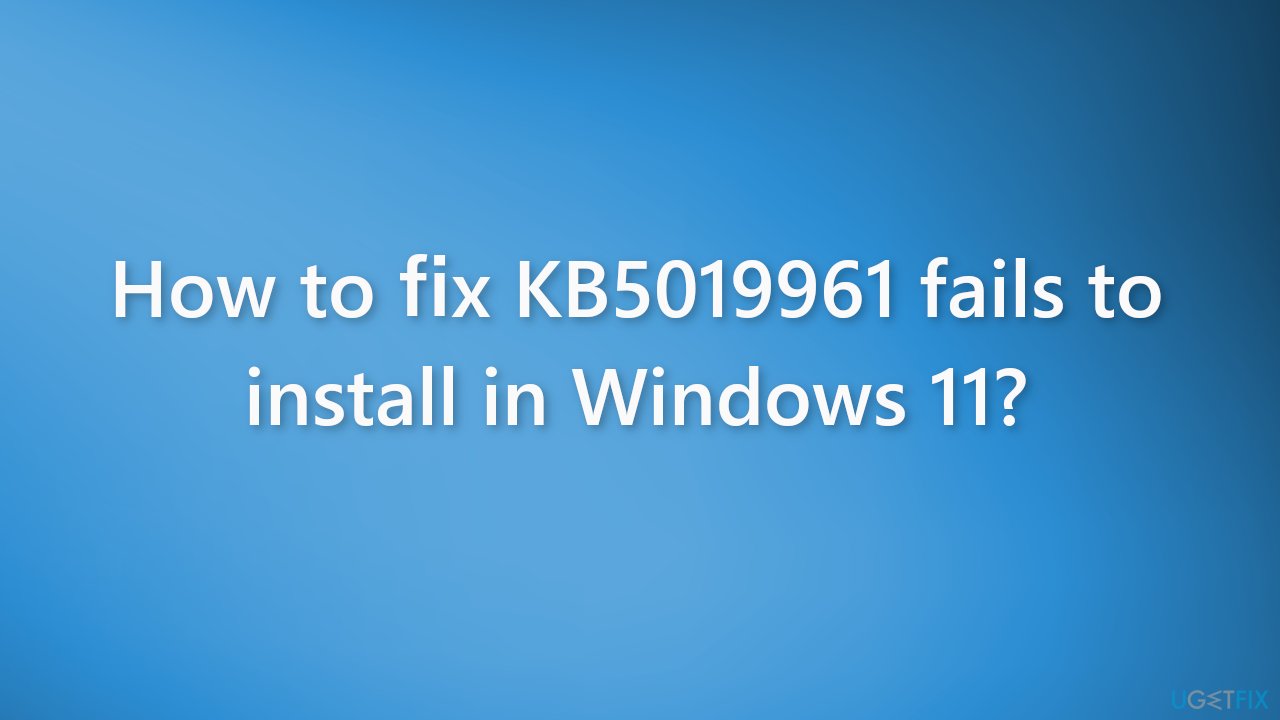
Solution 1. Run the Windows Update Troubleshooter
- Click the Windows button and select Settings
- Select System from the left pane, then scroll down on the right pane, and click on Troubleshoot
- Click on Other troubleshooters
- Locate the Windows Update troubleshooter and hit the Run button
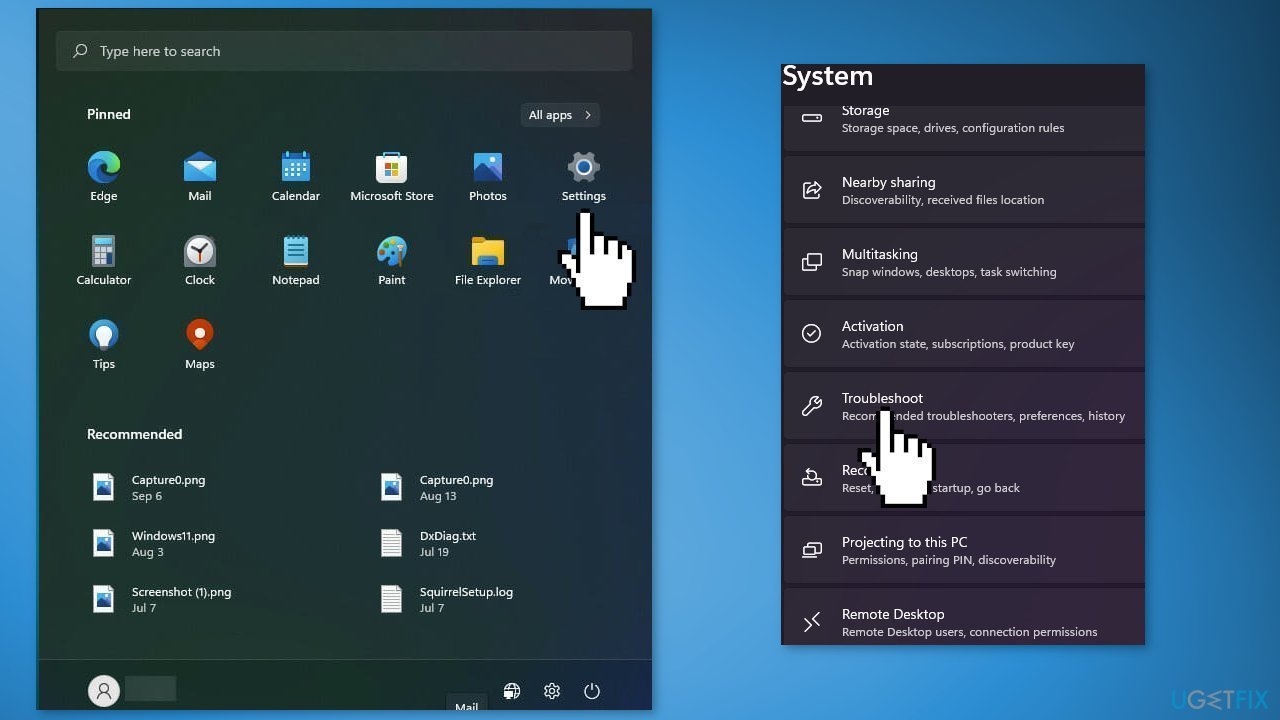
Solution 2. Repair Corrupted System Files
Use Command Prompt commands to repair system file corruption:
- Open Command Prompt as administrator
- Use the following command and press Enter:
sfc /scannow
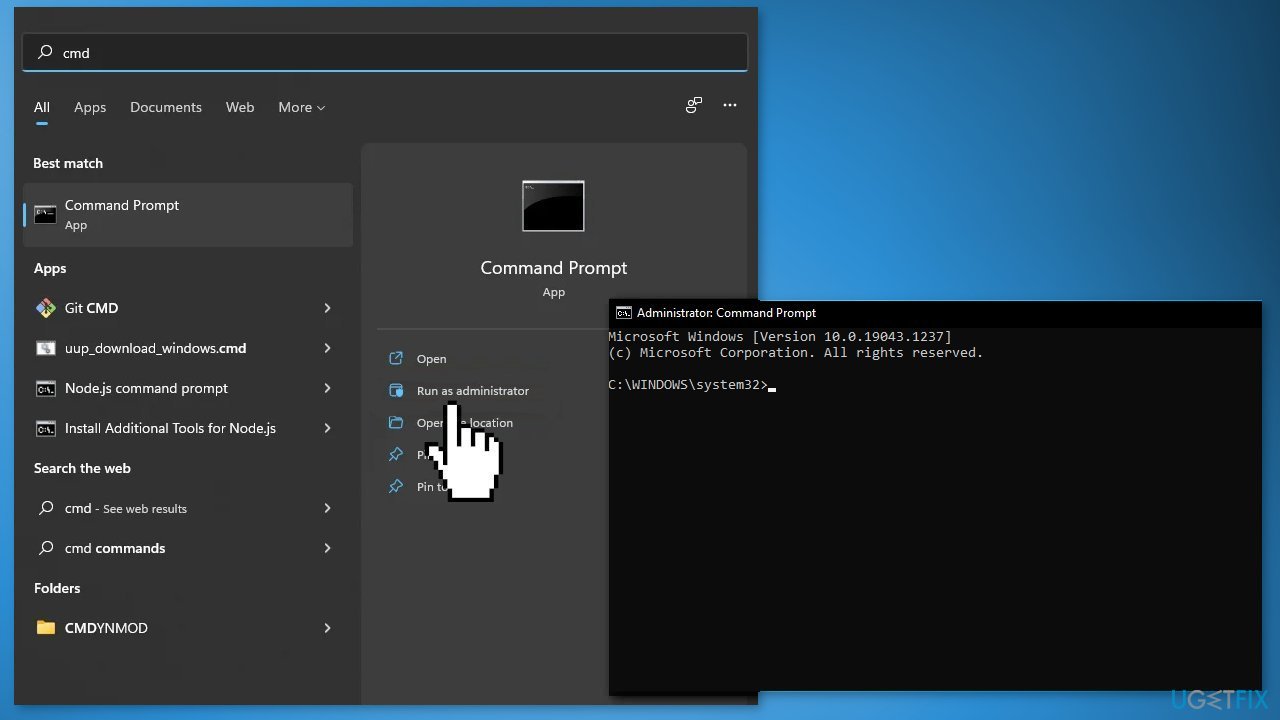
- Reboot your system
- If SFC returned an error, then use the following command lines, pressing Enter after each:
DISM /Online /Cleanup-Image /CheckHealth
DISM /Online /Cleanup-Image /ScanHealth
DISM /Online /Cleanup-Image /RestoreHealth
Solution 3. Run the Windows Update Service
- Press the Windows key + R to launch the Run box
- Type services.msc and click OK
- Locate the Windows Update service, right-click on it, and select Properties from the context menu
- Click the Startup Type drop-down menu and select Automatic from the list
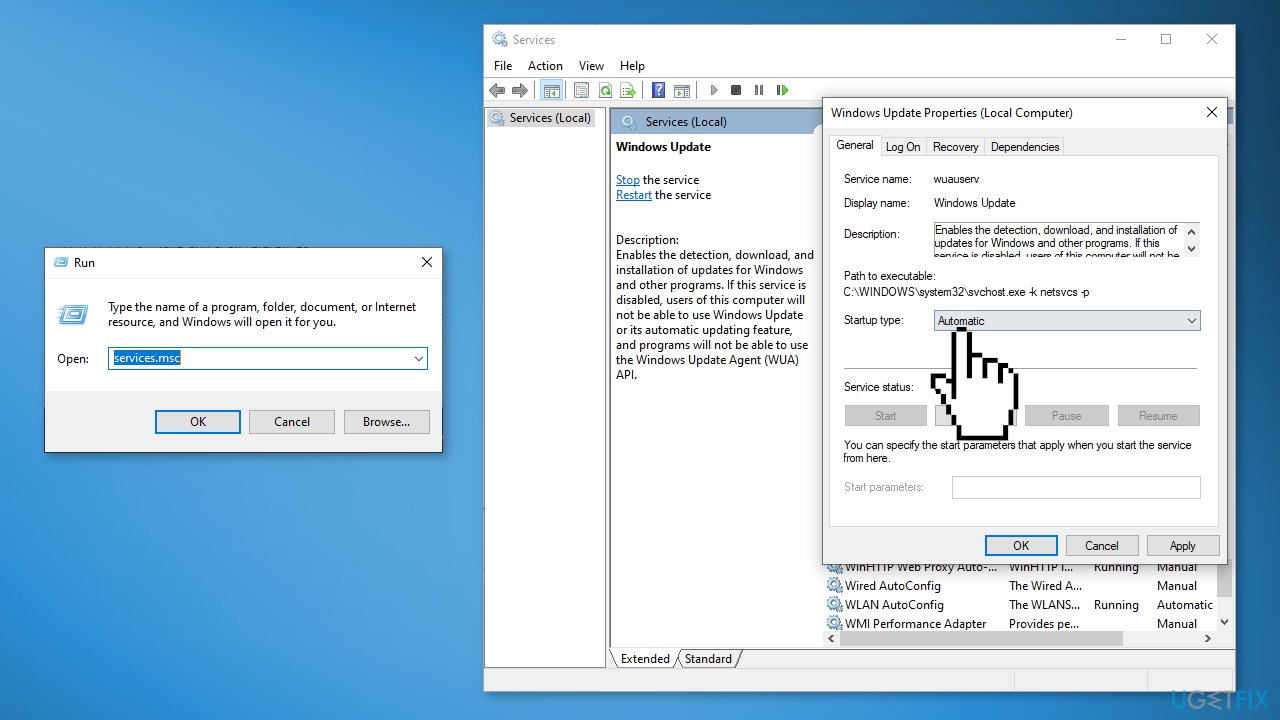
- If the service is not running, click the Start button and then OK to save the changes
Solution 4. Delete Contents in the SoftwareDistribution Folder
- Press the Windows key + S to launch the Search menu, type Windows Terminal in the text field, right-click the relevant search result, and select Run as administrator from the context menu
- Click Yes on the UAC prompt that appears
- Click the downward-facing arrow at the top and select Command Prompt
- Now copy and paste the following commands and press Enter after each one:
net stop wuauserv
net stop cryptsvc
net stop bits
net stop msiserver
- Once done, press the Windows key + E to launch File Explorer, paste the following path in the address bar, and press Enter:
C:\Windows\SoftwareDistribution\
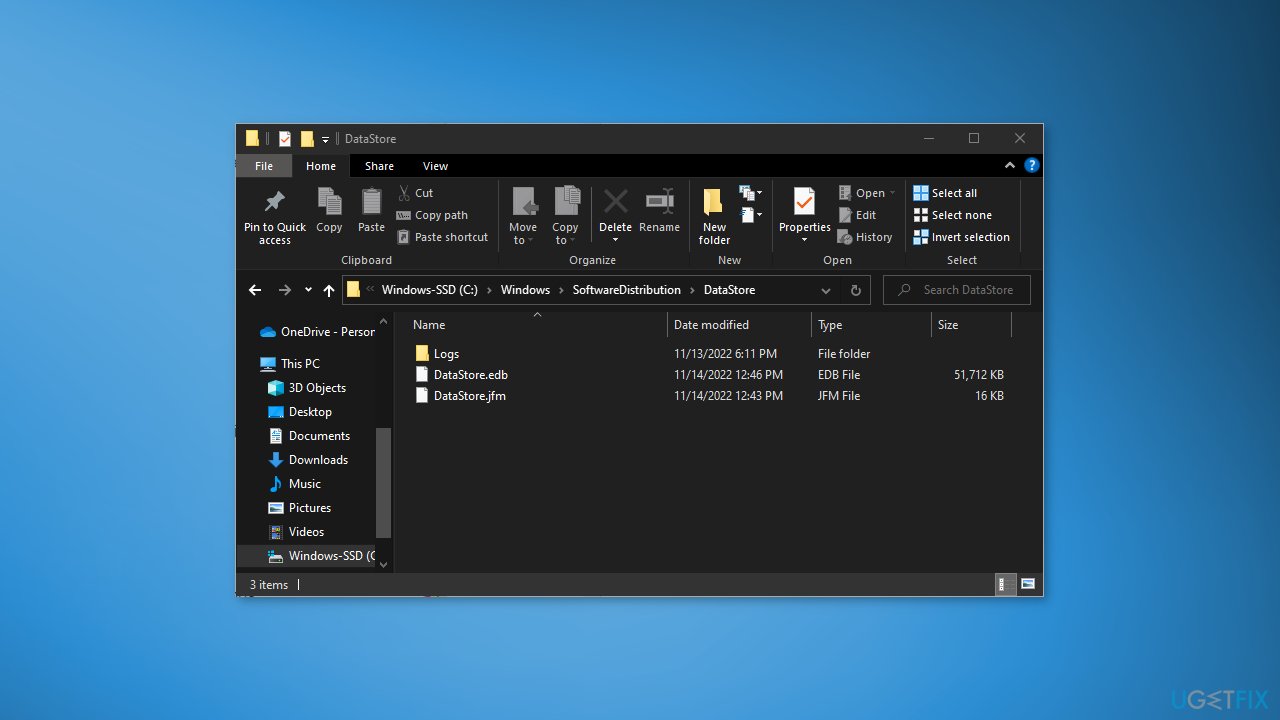
- Double-click the Data Store folder to view its contents
- Press Ctrl + A to select all files here and press the Del key to delete them
- Go back to the Command Prompt tab in Windows Terminal and run the following commands:
net start wuauserv
net start cryptsvc
net start bits
net start msserver
Solution 5. Install the Update Manually
If automatic download would not succeed, we recommend trying to download and install the update manually.
- Go to the official Microsoft Update Catalog website
- Type the KB number KB5019961 into the search bar, and press Enter or click Search
- You will find many different versions on the update – you need to find the one that matches your PC specs and Windows version (as a home user, ignore Windows server versions)
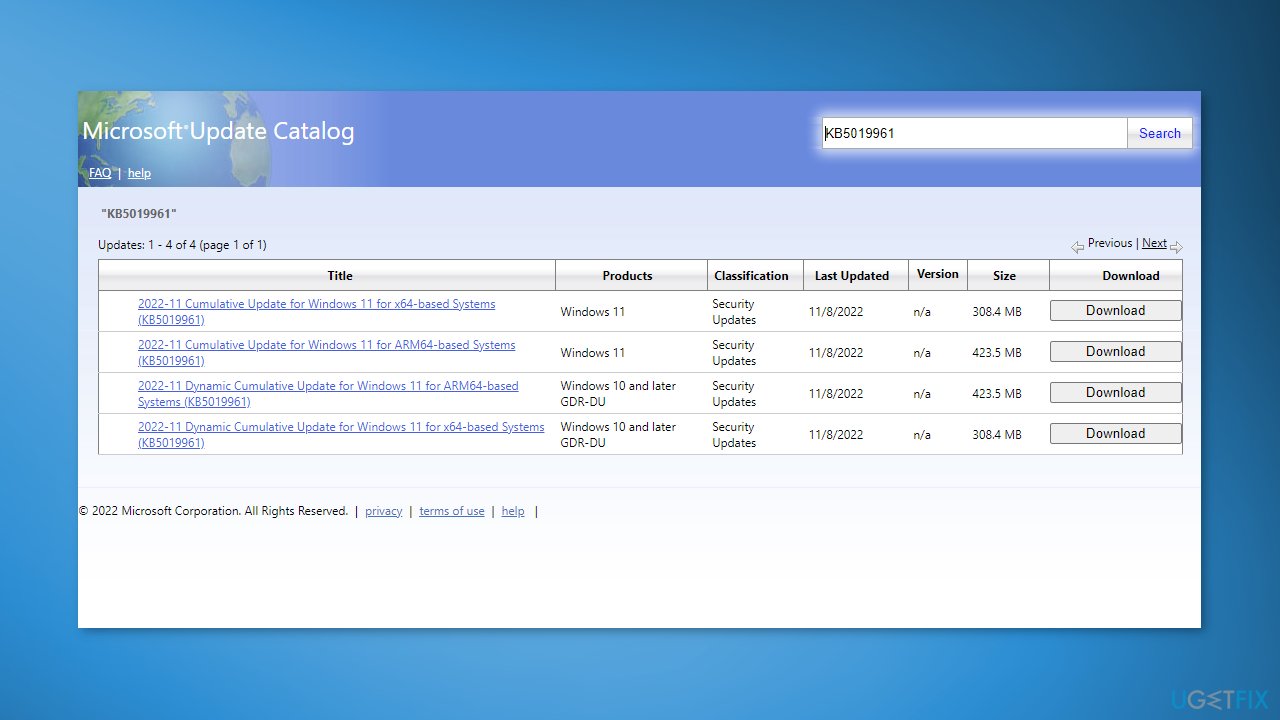
- After picking the correct version, click the Download button and proceed with on-screen instructions
- Restart your system once done.
Solution 6. Repair Install Windows
- Visit the official Microsoft website to download Windows 11 Installation Media
- Run the Media Creation Tool and select Create Installation Media for another PC
- Select your USB drive
- Let the Process complete of writing the Installation files to the USB drive
- Click Finish
- On the PC you wish to upgrade, Press Windows + E to open the File Explorer
- Open the Removable drive and click Setup.exe
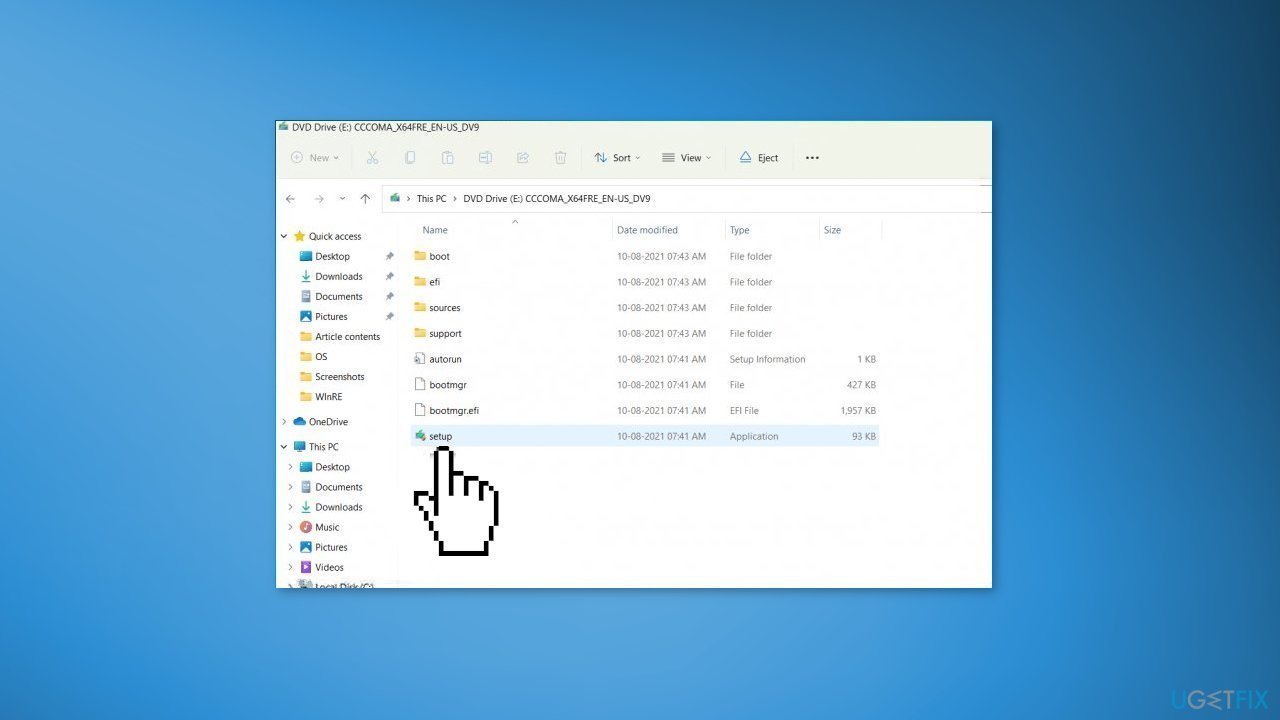
- Accept the license terms on the next screen
- Confirm the Upgrade options – Files, apps and Settings are kept
- Click Install, and the upgrade should start
Repair your Errors automatically
ugetfix.com team is trying to do its best to help users find the best solutions for eliminating their errors. If you don't want to struggle with manual repair techniques, please use the automatic software. All recommended products have been tested and approved by our professionals. Tools that you can use to fix your error are listed bellow:
Access geo-restricted video content with a VPN
Private Internet Access is a VPN that can prevent your Internet Service Provider, the government, and third-parties from tracking your online and allow you to stay completely anonymous. The software provides dedicated servers for torrenting and streaming, ensuring optimal performance and not slowing you down. You can also bypass geo-restrictions and view such services as Netflix, BBC, Disney+, and other popular streaming services without limitations, regardless of where you are.
Don’t pay ransomware authors – use alternative data recovery options
Malware attacks, particularly ransomware, are by far the biggest danger to your pictures, videos, work, or school files. Since cybercriminals use a robust encryption algorithm to lock data, it can no longer be used until a ransom in bitcoin is paid. Instead of paying hackers, you should first try to use alternative recovery methods that could help you to retrieve at least some portion of the lost data. Otherwise, you could also lose your money, along with the files. One of the best tools that could restore at least some of the encrypted files – Data Recovery Pro.
- ^ November 8, 2022—KB5019961 (OS Build 22000.1219). Microsoft. Windows Support.
- ^ Chris Hoffman. Everything You Need To Know About the Blue Screen of Death. Howtogeek. Tech Insight Magazine.
- ^ Tim Fisher. What Is the Windows Registry?. Lifewire. Software and Apps.



